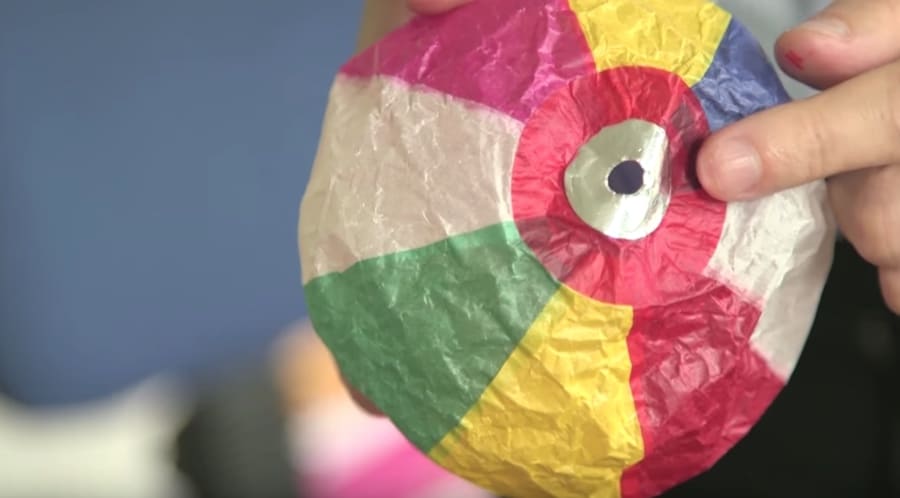The kamifusen is a traditional Japanese paper (kami) balloon (fusen) toy that became popular in the 1890s and can still be found in a variety of designs or decorated as spherical koi, pufferfish, penguins, monkeys, racoons, and other animals. In this Numberphile video with Brady Haran, Japanese mathematician Tadashi Tokieda explores the physics behind why this paper sphere with one hole can be inflated when it’s batted around.

Related reading from JPL’s Ichiro Fukumori in Physics Today:
Part of the kamifusen’s genius is the paper from which it is made. The paper is not only lightweight and relatively impermeable to air, but it also has a degree of plasticity that allows it to deform easily and retain its resulting shape. Because of those properties, the kamifusen inflates to a volume commensurate with its air content and maintains that volume until additional air is added. As a result, a squashed kamifusen can accumulate air and eventually inflate to its full size from repeated bouncing, even though the net pumping from a single bounce may be small. A balloon made of plastic, rubber, or any other material that does not share the key properties of kamifusen paper would not inflate as the Japanese balloon does.
Elastic waves, fluid motion, and the paper’s plasticity work together in the self-inflation of the kamifusen. The balloon’s deceptively simple design conceals an intricate process at work and attests to the ingenuity of the artisans who devised this elegant, intriguing toy.

Follow this with more Numberphile and these:
• The Stacked Ball Drop (and Supernovas)
• Pass It On: Turning scraps into soccer balls for village children
• Haruki Nakamura’s surprising paper karakuri animals
Plus: How many pitches does your mug make? (And why?)
Curated, kid-friendly, independently-published. Support this mission by becoming a sustaining member today.


